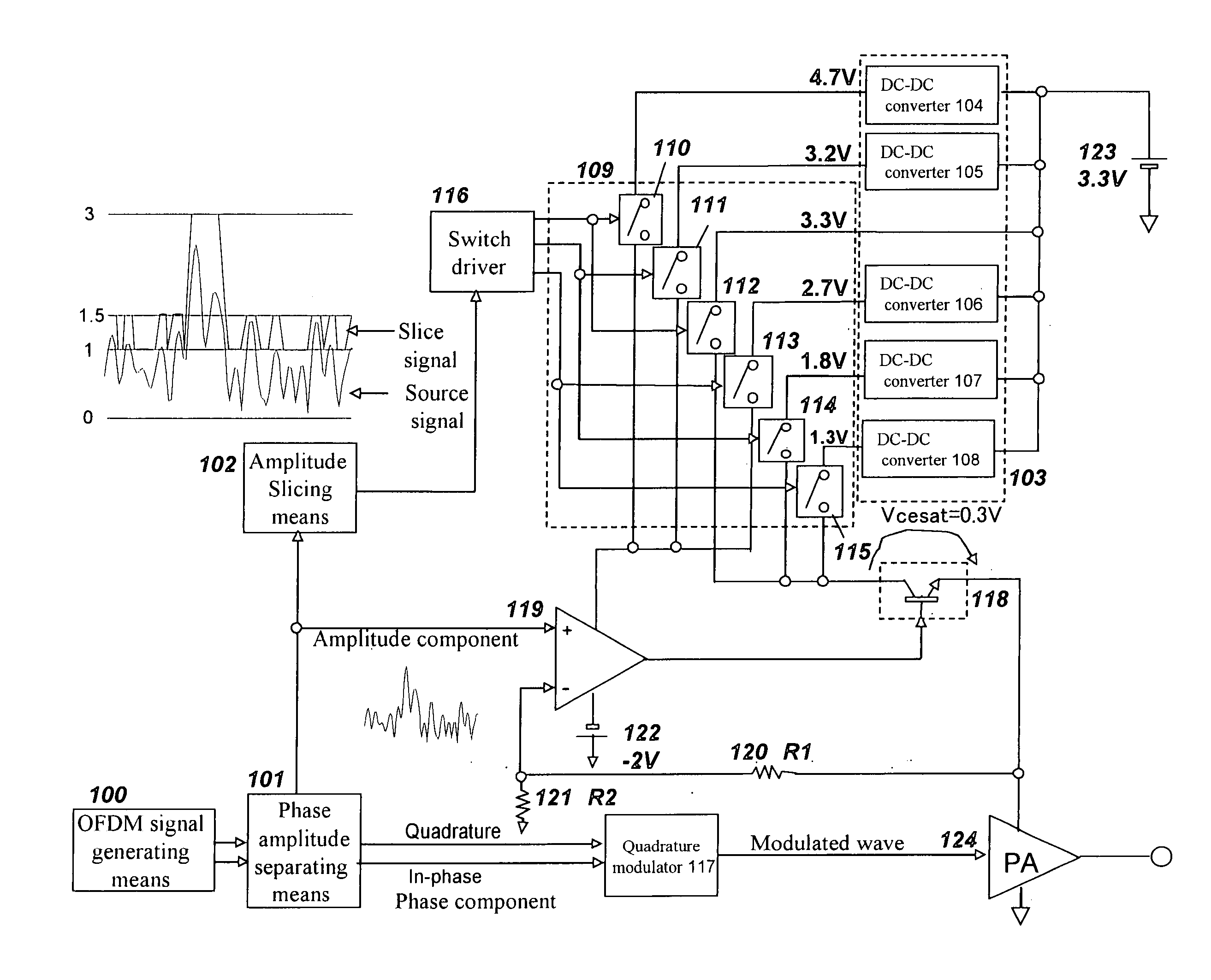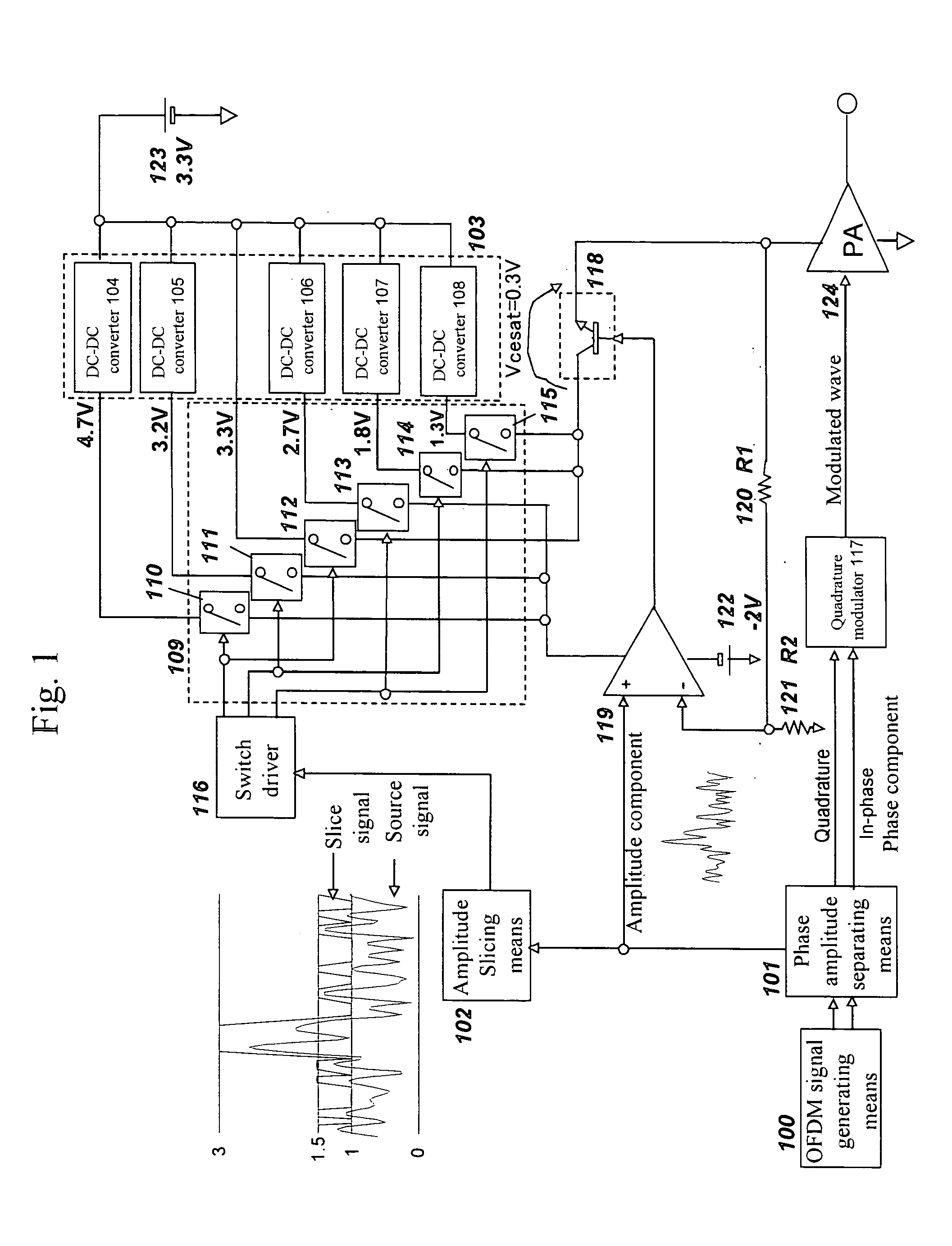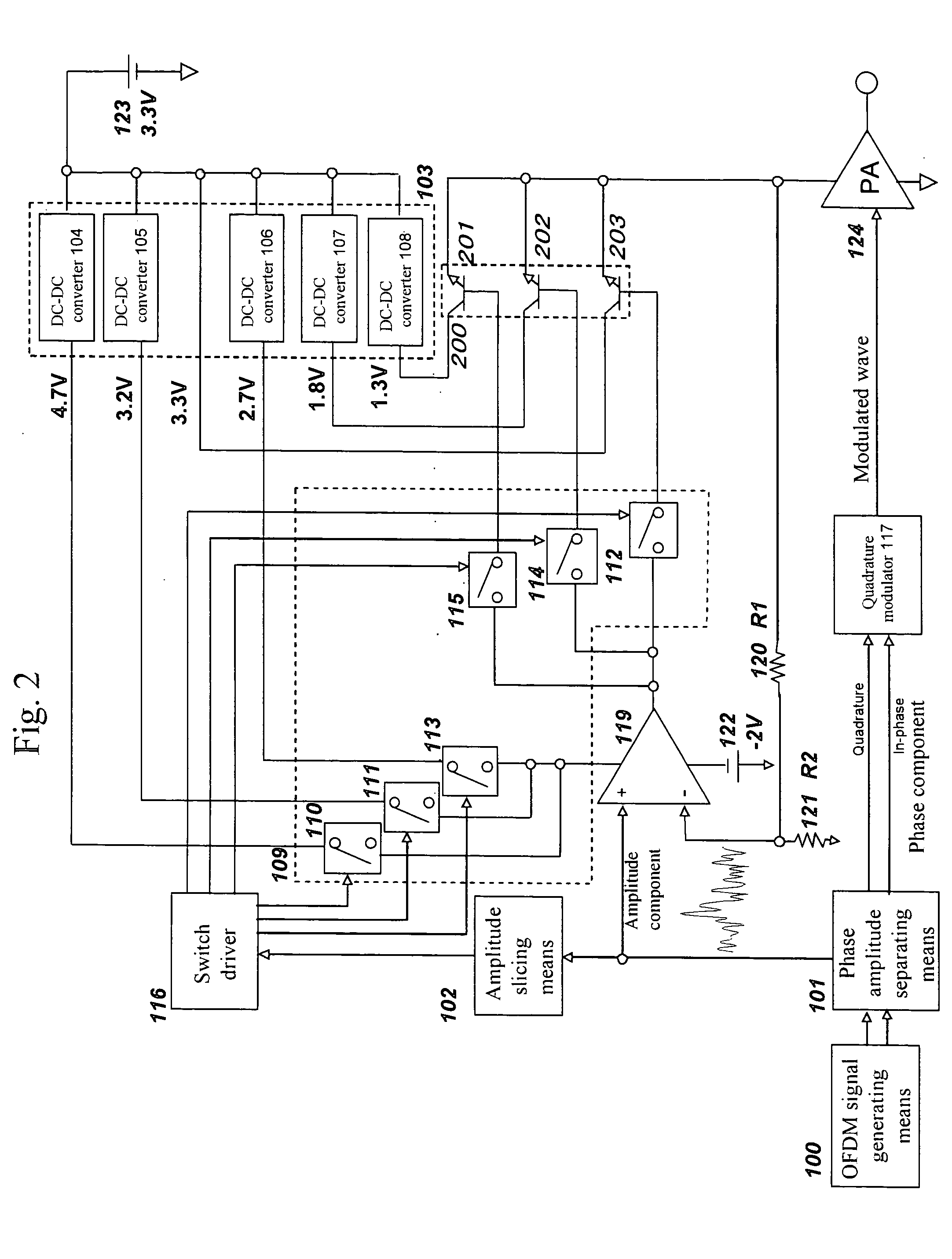Transmitter
a transmitter and receiver technology, applied in the field of radio transmitters, can solve problems such as deterioration of evms, and achieve the effect of high efficiency of operation
- Summary
- Abstract
- Description
- Claims
- Application Information
AI Technical Summary
Benefits of technology
Problems solved by technology
Method used
Image
Examples
first embodiment
[0034] Hereafter, a first embodiment of the present invention will be explained with reference to the drawing. In this embodiment, a wireless LAN system according to IEEE802.11a standard which uses a broadband modulated signal will be explained as an example.
[0035]FIG. 1 shows a circuit diagram of a transmitter according to the first embodiment of the present invention which achieves an EER method. As shown in FIG. 1, this transmitter includes an OFDM signal generating means 100, a phase amplitude separating means 101, an amplitude slicing means 102, a switching regulator group 103, a switch group 109, a switch driver 116, an quadrature modulator 117, an emitter follower 118, an operational amplifier 119, a resistor 120 with a resistance R1, a resistor 121 with a resistance R2, a negative power supply 122 with a negative voltage of −2 V, a positive power supply 123 with a positive voltage of 3.3V, and a saturated type RF power amplifier 124.
[0036] The above OFDM signal generating ...
second embodiment
[0098]FIG. 2 is a block diagram of a transmitter according to a second embodiment of the present invention. This embodiment is different from the first embodiment with respect to the followings. That is, the outputs from the positive power supply 123 and the DC-DC converters 107 and 108 are directly connected the collectors of respective emitter followers 201 through 203 of an emitter follower group 200 of the same number as that of those outputs. In addition, paths connected to base terminals of respective emitter followers 201 through 203 of this emitter follower group 200 are switched by switches the 112, 114, and 115, the number of which is the same as that of the emitter followers 201 through 203 of the emitter follower group 200. The same symbol is given to the same component as that of the first embodiment and description thereof will be omitted.
[0099] A base current of the specific emitter follower among the emitter followers 201 through 203 of the emitter follower group 20...
third embodiment
[0101]FIG. 3 is a block diagram of a transmitter according to a third embodiment of the present invention. This embodiment is different from the first embodiment with respect to the followings. That is, an output of the OFDM signal generating means 100 is outputted to the quadrature modulator 117. The output of the OFDM signal generating means 100 is also inputted into an amplitude extracting means 300. The amplitude component extracted by the amplitude extracting means 300 is outputted to the operational amplifier 119 and the amplitude slicing means 102. The same symbol is given to the same component as that of the first embodiment and description thereof will be omitted.
[0102] As for additional effects expected for the third embodiment, since not the phase component but the modulated signal is provided to the RF power amplifier 124 via the quadrature modulator 117 as it is, it is possible to avoid the deterioration of the modulation accuracy (Error Vector Magnitude: EVM), which c...
PUM
 Login to View More
Login to View More Abstract
Description
Claims
Application Information
 Login to View More
Login to View More - R&D
- Intellectual Property
- Life Sciences
- Materials
- Tech Scout
- Unparalleled Data Quality
- Higher Quality Content
- 60% Fewer Hallucinations
Browse by: Latest US Patents, China's latest patents, Technical Efficacy Thesaurus, Application Domain, Technology Topic, Popular Technical Reports.
© 2025 PatSnap. All rights reserved.Legal|Privacy policy|Modern Slavery Act Transparency Statement|Sitemap|About US| Contact US: help@patsnap.com



